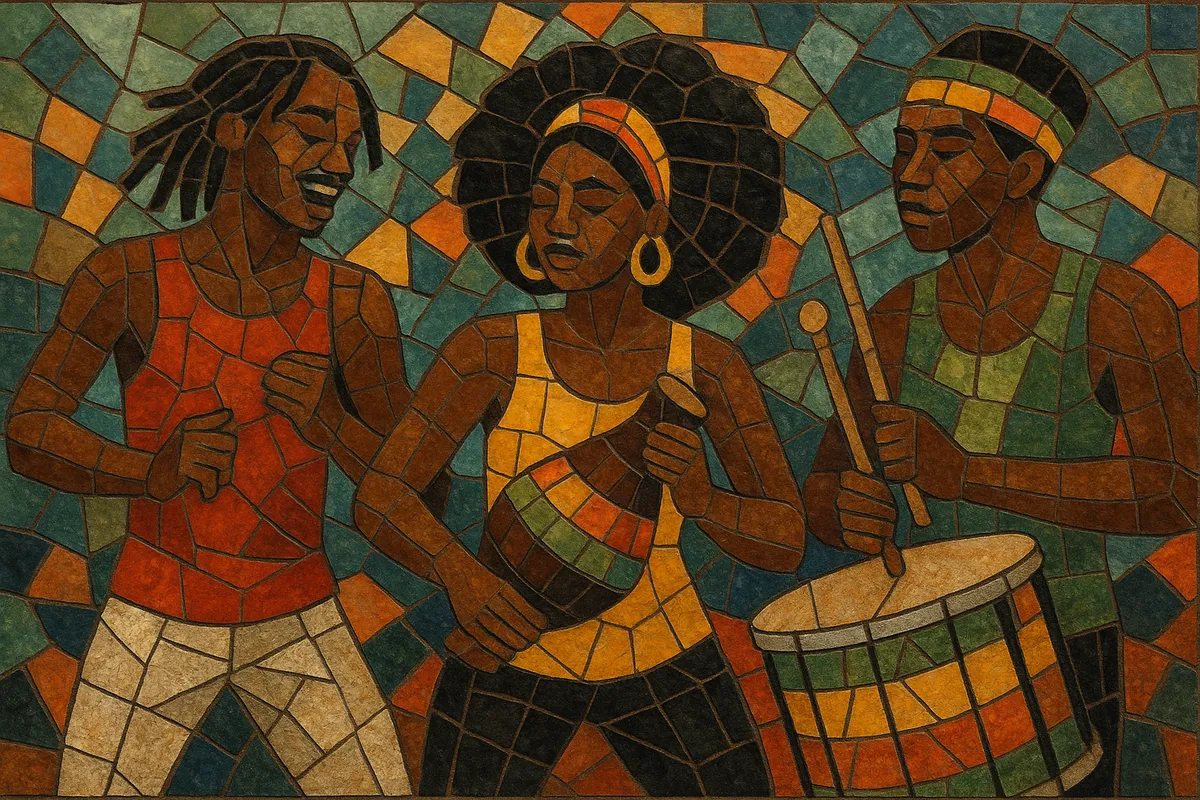Samba-reggae is a Bahian Afro-Brazilian percussion-driven style that fuses the propulsive swing of samba with the off-beat lilt of Jamaican reggae. It is performed by large drum ensembles (blocos afro) whose surdos, caixas, repiniques, timbals, and shakers create a massive, syncopated groove.
Typically slower than Rio-style samba and aligned to a reggae backbeat, samba-reggae emphasizes collective energy, call-and-response vocals, and choreography. Its sound became a musical emblem of Salvador’s carnival and a vehicle for Black pride, spirituality, and social commentary, later crossing into pop through collaborations with major international artists.
Samba-reggae emerged in the mid-1980s in Salvador, Bahia, within the Black cultural organizations known as blocos afro. Percussionists and arrangers—most notably Neguinho do Samba with Olodum, and leaders from Ilê Aiyê—reoriented samba’s surdo patterns around a reggae backbeat, slowing the tempo and adding a loping, syncopated feel. The style drew on Afro-Brazilian religious rhythms (notably ijexá from Candomblé), Rio’s batucada technique, and Jamaican roots reggae.
Early anthems like Olodum’s “Faraó (Divindade do Egito)” codified the groove and helped define an aesthetic intertwined with Afro-Brazilian identity, pan-African imagery, and social justice.
Through the late 1980s and early 1990s, blocos afro (Olodum, Ilê Aiyê, Muzenza, among others) popularized samba-reggae in Salvador’s carnival. Artists including Daniela Mercury, Margareth Menezes, and Carlinhos Brown brought the rhythm to mainstream Brazil and beyond—Mercury’s “O Canto da Cidade” and Timbalada’s repertoire translated the bloco energy into radio-ready songs.
Global visibility spiked with high-profile collaborations and appearances, such as Paul Simon’s use of Bahian percussion on “The Obvious Child” and Michael Jackson’s “They Don’t Care About Us” video filmed with Olodum in Salvador, which spotlighted the power of the ensemble sound.
Samba-reggae became a defining heartbeat of Bahia, shaping the 1990s axé pop wave and influencing pagodão baiano. Internationally, it informed worldbeat and world-fusion productions and inspired community percussion groups worldwide. Despite commercial crossovers, the style remains rooted in bloco culture—collective drumming, dance, and the affirmation of Afro-Brazilian heritage.


